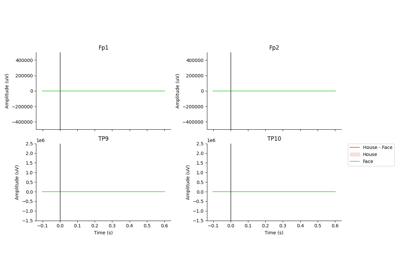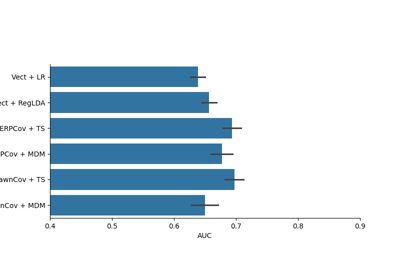Visual N170
The N170 is a large negative event-related potential (ERP) component that occurs after the detection of faces, but not objects, scrambled faces, or other body parts such as hands. The N170 occurs around 170ms after face perception and is most easily detected at lateral posterior electrodes such as T5 and T6 1. Frontal or profile views of human (and animal 2) faces elicit the strongest N170 and the strength of the N170 does not seem to be influenced by how familiar a face is. Thus, although there is no consensus on the specific source of the N170, researchers believe it is related to activity in the fusiform face area, an area of the brain that shows a similar response pattern and is involved in encoding the holistic representation of a face (i.e eyes, nose mouth all arranged in the appropriate way).
In this notebook, we will attempt to detect the N170 with the Muse headband using faces and houses as our stimuli. The Muse’s temporal electrodes (TP9 and TP10) are well positioned to detect the N170 and we expect we’ll be able to see an N170 emerge from just a few dozen trials. We will then run several different classification algorithms on our data in order to evaluate the performance of a potential brain-computer interface using the N170.
Visual N170 Experiment Notebook Examples:
- orphan:


